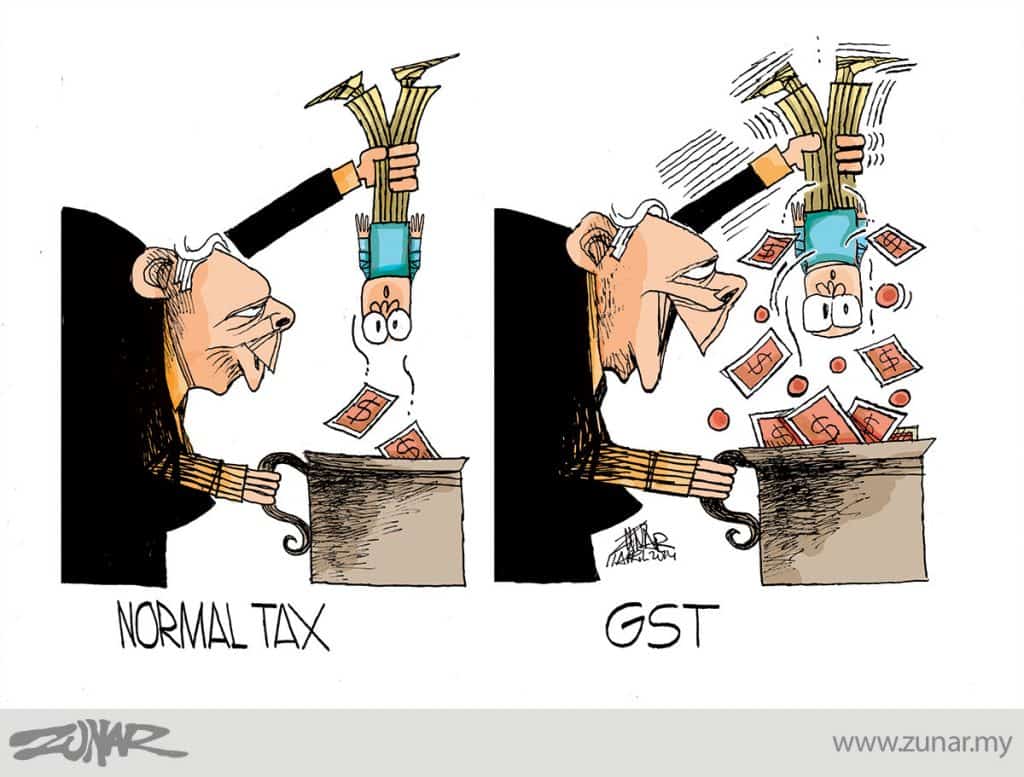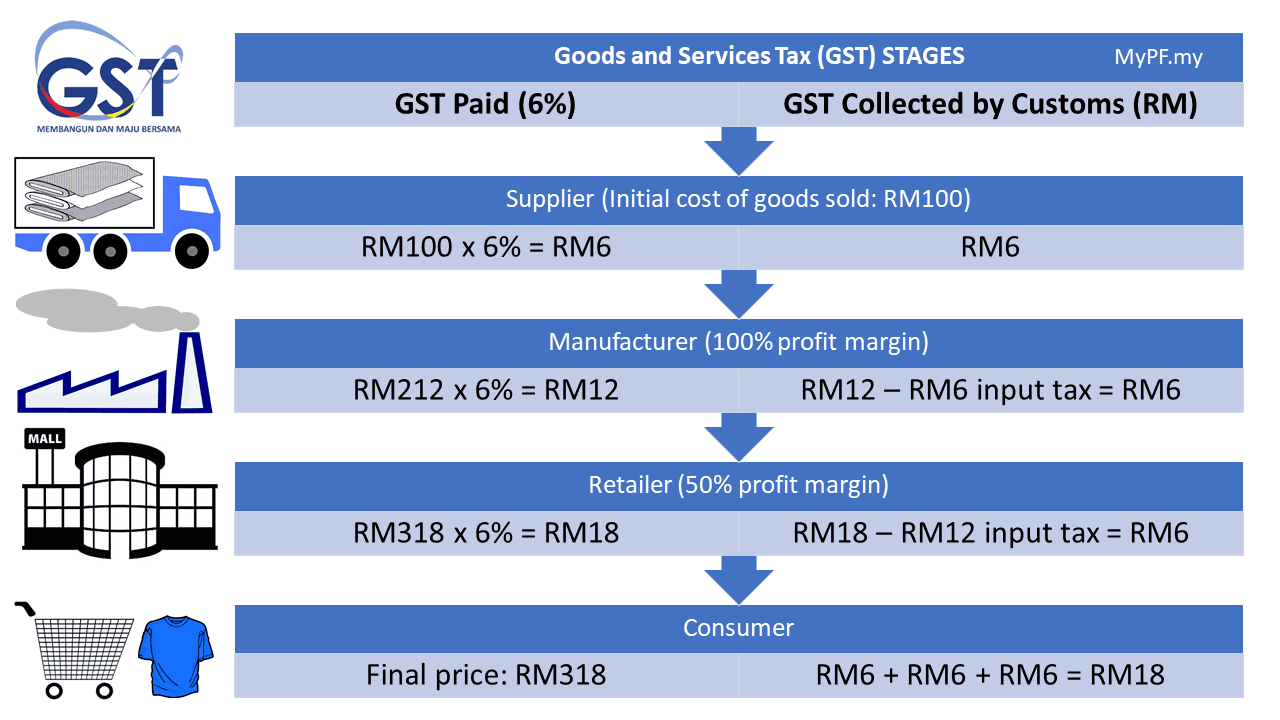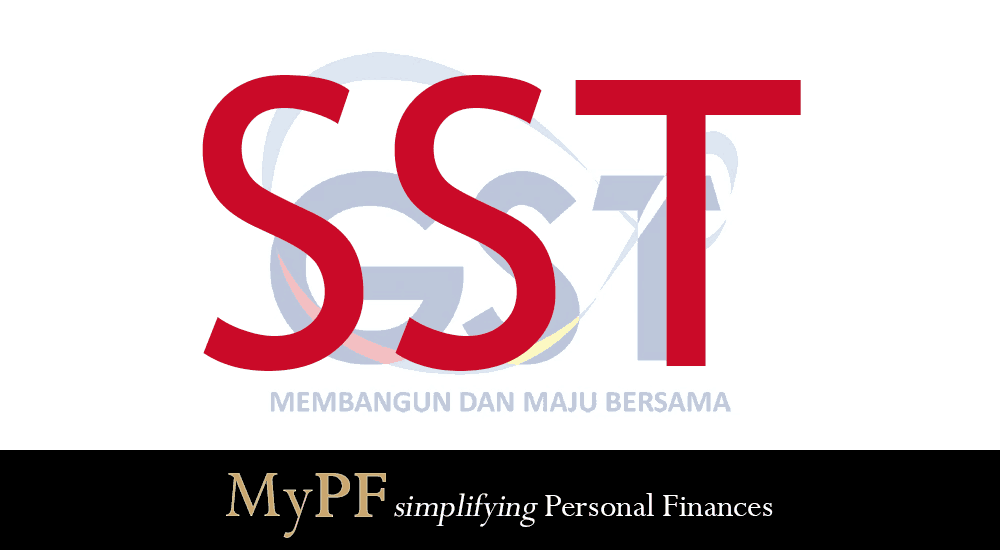Your Malaysian GST to SST guide: Know what’s happening, understand the fears, and be prepared for the change from GST to SST which the 1st stage of implementation happening with zero-rated GST this June 2018.
Updated July 28, 2018

Contents
What is GST and SST
Goods and Services Tax (GST): is a tax on most products and services for domestic consumption at every level in the production process. GST can be claimed as input tax for companies with revenue above RM500k. GST was implemented in April 2015 replacing SST. GST is the most commonly used form of taxation used by 160 / 190 countries globally. GST is also known as Value Added Tax (VAT) in some other countries.
Sales and Service Tax (SST): are actually covered by 2 separate tax laws on a wide variety of goods and services at a single level implemented in 1970s. The Sales Tax Act 1972 is a single-stage tax charged typically at the manufacturer’s level. The Service Tax Act 1975 is a single-stage tax charged at the consumer’s level except at tax free zones. The sales tax was at 10% and service tax was at 6% respectively prior to being replaced by GST in 2015.
GST vs SST Comparison
| Tax | GST | SST |
|---|---|---|
| Tax Revenue Estimate | RM45b | RM20b |
| Tax Base | Narrow | Broad |
| Transparency & Regulation | High | Low |
| Tax Rate % | 6% | 6 - 10% |
| Tax Stages | Multi stage | Single stage |
| Business Input Tax Credit | Yes | No |
| Business Export Tax Relief | Yes | Partial |
| Business Implementation Cost | High | Low |
GST Criticism
- GST has caused hardship on the people with cost of goods going up since implementation.
- Middle men have taken advantage of GST to raise prices and use tax as a convenient
excusereason. - For businesses, GST claim back on tax is difficult, can be declined, and requires RM500k in sales before being claimable.
- Malaysia was able to develop and collect taxes for decades without GST.
- Some GST exempted (zero-rated) goods were not necessities but expensive items such as lobsters.
- For dining out, GST is even charged on service charges (which was initially communicated as to be removed).

Political cartoonist Zunar on GST
SST Criticism
- SST will cause government tax revenue to drop vs GST.
- SST is a less progressive form of tax and most countries have moved to GST.
- Switching back from GST to SST will cost businesses uncertainty and money (again).
Moving From GST to SST

vs

This SST example makes certain assumptions for simplification purposes and is at 6% (instead of 10%) to show the difference between GST vs SST at the same % tax rate.
Why is Less Tax collected with SST vs GST?
SST is at 10%. GST is at 6%. Why then is less tax collected at with SST vs GST?!
At a glance, GST appears that it should lower taxes. However, sales tax only applies to certain manufactured and imported goods at the manufacturing or imported stage only. Likewise service tax only applies on certain services.
The implementation of GST also resulted in an increase of items being taxed compounded with companies facing issues claiming back input tax (or even proceeding to pass through additional costs at each level to consumers).
Additionally, GST is a consumer-only tax which is tax neutral for companies. SST is tax-deductible for companies which lowers overall tax collected.
What’s the hoohah on GST to SST?
The cancellation of GST is a key part of the new government’s election manifesto. Public opinion is generally that GST caused prices of goods and services in Malaysia to go up without the country seeing significant benefits to the additional tax revenue collected. A key question being asked is how will the change from GST to SST affect businesses as well as consumers?
Key GST to SST Changes
- GST will be at 0% effective June 1, 2018.
- GST act repealed July 16, 2018.
- SST to be reintroduced on September 1 2018.
- Tax shortfall estimated at RM21b.
Why 0% GST instead of GST being abolished
0% GST (zero-rated) will allow a smoother and lower cost transition from GST to SST.
Business owners still have six years to claim GST input tax (until GST fully abolished).
Additionally, parliament needs to meet and approve GST Act officially before it can be replaced by another tax law.

GST to SST Change Impact
GST to SST Collection Shortfall to be covered by:
- Streamlining expenditure.
- Trimming unnecessary discretionary spending.
- Reviewing and prioritizing major projects.
- Revamping and restructuring revenue generating non-financial public enterprises (e.g. Petronas).
Bank Negara Malaysia (BNM) (freemalaysiatoday.com)
- Prices expected to drop without 6% GST.
- Important for the relevant authorities to ensure that businesses pass lower cost benefits to the public.
- Likely impact on inflation but too early to be calculated. Rates will be revised if needed.
Property Industry (REHDA) (theedgemarkets.com)
- Property prices expected to drop.
- Construction materials and costs should go down.
- GST about 2-4% of costs.
Automotive Industry (PaulTan.org)
- Car prices revised downwards without GST (and SST until reintroduced).
- Some car makers and distributors will remain prices and refund difference if price goes down.
- Longer term prices may go up slightly.
- Fuel subsidy cost: RM3b.
Other GST to SST Impact
- 0% GST and no SST from May 2018 until SST reintroduced on September 1, 2018.
- Consumer products businesses (and stocks) expected to do well.
- Cost of doing business will go down.
- Reduced compliance cost of GST filing and penalties.
- Potential downgrade in Malaysia’s credit rating.
- (Short) delay in some spending until after GST zero rated.
SST (Re) Introduction
- SST will be reintroduced on Sep 1, 2018
- SST for Sales (Goods): 5% or 10% and only applies for certain manufactured or imported goods at manufactured and imported stages only
- SST for Services: 6% and only applies on certain services
- SST being adjusted to minimise impact to lower income groups.
- SST consultation ongoing with Pricewaterhouse Coopers to rationalise and improve tax efficiency.
“Tax money will be used for public purposes for the benefit of the people. Generally, it has been proven that if people believe that the government is using the obtained tax money for the right purposes, they are willing to pay more and we hope that we can instill this confidence among the taxpayers.” ~Lim Guan Eng, Finance Minister
SST Shortfall
- SST revenue 2018: RM21b
- SST revenue shortfall vs GST 2018: RM21b
- Increased oil revenue with higher oil prices ($70/barrel): RM5b
- Increased GLC income: RM5b
- Expenditure saving identified: RM10b



What happens to progressive house payments via bank loan which was already inclusive of 6% GST during the purchase? Can consumer claim back the 6% of the remaining outstanding payments? E.g paid 20% progressive payment, so can we get the bank to imburse the GST for the balance 80%?
House above rm1mil only kena GST. Below rm1mil tarak kena.
Residential properties were under the exempted category. There won’t be 6% included in the progress payment.
For this SST system, can the government tracked down the exact tax percentage that they put on the single layer? It is concluded to be at 10% rate of SST as of now. If there is no proper system to track down the exact tax being imposed, the manufacturer then can easily put the amount and claim that that is for 10% SST is that so?
We are hosting an international conference on last week of September 2018. As there is an early bird rate for registration by 1st week of July, how do we go about incorporating SST when it comes effect? Should we put an indemnity clause on the invoice stated as “all payments made on or after September 2018 will be subjected to SST” or the fee is not subject to SST at all?
On another understanding, delegates who paid by 1st September is SST-free. But then again, the service (the conference) is only delivered in September.
Really appreciate your council. Thank you.
Your calculation for sst – retailer profit 50% margine is wrong. How come rm200 goes to RM318 insteed of 50% profit margin. It should be RM300. This shows consumers will save RM18 compare to gst.
The final retail price under GST should be RM318 + RM18 = RM336 isn’t it?
Under SST final retail price is lower at RM318.
Automotive Industry (PaulTan.org)
Car prices revised downwards without GST (and SST until reintroduced).
Some car makers and distributors will remain prices and refund difference if price goes down.
Longer term prices may go up slightly.
Talking about car industry, is it possible the car price will go down after SST applied starting September 2018? This is because, we know even though GST only 6%, but this tax is multilevel compared to SST…
How will SST calculation be, is it 1.06% or 1.16%
How about retailer and/dealer related to printing industries? An accountant told me that if you are the middleman (dealing with the manufacturer/supplier on behalf of the clients), you will need to have sales and service tax as certain paper & articles of paper are subjected to 10%.
For real estate agent , normally owner will practice to pay GST 6%
Example : rm 10k commission will be 6% GST = rm 600.
currently SST 6% , should we need to collect as well ?
Hi ,
I would like to know we are doing furniture business. we buy semi finished product from manufacturer & 70% complete product to our warehouse then we sent to end user place. that mean we have to charge SST to out client also? we sub to sub con install those furniture.
I am a shophouse developer, my last claim is on October 2018, do i need to impose GST to my progress claim?
Hi, I just on board to a developer , due to slowdown in sales, our management decide to lease part of our residential serviced apartments to some long stay tenants (more than 2 years). Our leasing revenue is more than the RM 1mil but I came across some blogs mentioning that rental is not subjected to SST? This is not true right? We still must charge and pay SST right?
Hi, are renting of hospital equipment and medical devices subject to SST